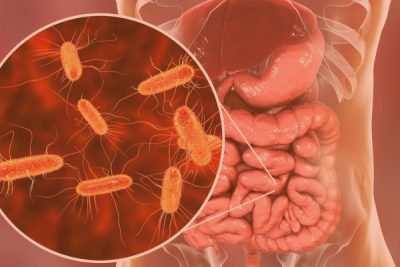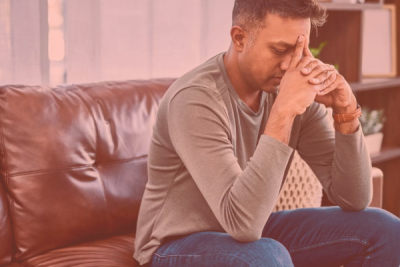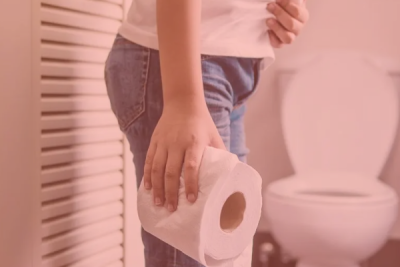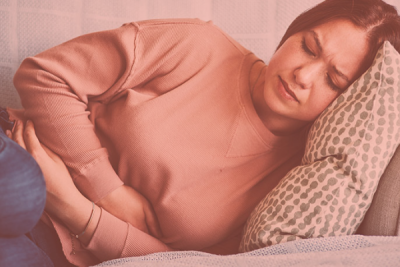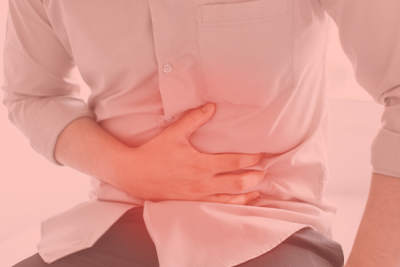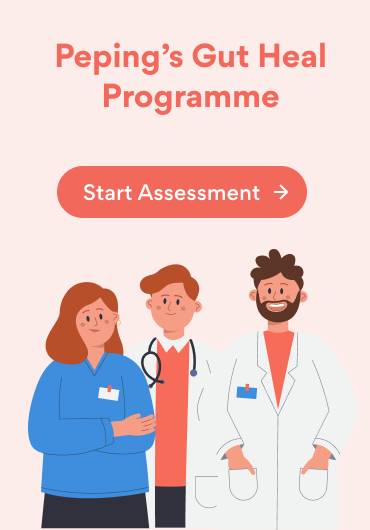Feeling constipated gives a huge blocker feel. Around 22% of the Indians suffer from constipation. Consumption of junk food, low water intake and irregular eating habits seem to be the biggest cause of constipation. Constipation occurs when bowel movements become infrequent or difficult to pass. Understanding the causes of constipation is crucial for effective management. In this article, we will explore the types of constipation, delve into their underlying factors, discuss the causes of constipation, and highlight the importance of proper diagnosis and treatment.
Types of Constipation
Constipation can be classified into primary constipation and secondary constipation. Primary constipation has three main subtypes: normal transit constipation, slow transit constipation, and pelvic floor dysfunction.
What is Primary Constipation?
Primary constipation refers to constipation that is not caused by an underlying medical condition. It can be further categorized into subtypes based on the underlying cause.
1. What is Normal Transit Constipation?
In normal transit constipation, stools travel at a normal rate and the stool frequency is also normal but the patient still might feel constipated. The severity of normal transit constipation varies, with some individuals experiencing mild symptoms and others more severe discomfort.
Normal transit constipation is often related to factors such as inadequate dietary fiber intake, low fluid consumption, a sedentary lifestyle, and certain medications. Incorporating a diet rich in fiber, drinking enough water, and engaging in regular physical activity can help relieve normal transit constipation symptoms. A patient suffering from this might also feel bloated.
2. What is Slow Transit Constipation?
People with slow transit constipation do not feel the natural bowel stimulation. Slow transit constipation occurs when the movement of stool through the colon is slow, resulting in less frequent bowel movements and requiring excessive straining. The exact cause of slow transit constipation is not fully understood, but it is believed to involve abnormalities in the nerves or muscles of the colon. It mostly occurs in middle-aged females.
3. What is Pelvic Floor Dysfunction?
Pelvic floor dysfunction occurs when the patient is not able to relax and coordinate the pelvic floor muscles to pass stools. The pelvic floor muscles play a vital role in bowel movements by coordinating the relaxation and contraction necessary for proper stool passage.
What is Secondary Constipation?
Secondary constipation occurs as a result of an underlying medical condition or medication use.
The most common causes include diabetes, hypothyroidism, depression, IBS, IBD, dementia and a few others.
Secondary constipation can also get triggered because of certain medications, hormonal imbalances, neurological disorders, and structural abnormalities in the digestive system. Unlike primary constipation, which is not caused by an underlying medical condition, secondary constipation requires identification and addressing the specific cause to effectively manage the condition.
Medications such as antacids, anti-depressants, iron supplements, and anticholinergic drugs can contribute to constipation. Structural abnormalities like colon structures can physically obstruct the passage of stool.
In cases of secondary constipation, it is crucial to work closely with healthcare professionals to identify and manage the underlying condition or medication that may be contributing to constipation. Proper diagnosis and targeted treatment of the underlying cause can lead to effective relief from constipation symptoms.

Causes of Constipation
Common causes of constipation include:
- Inadequate Dietary Fiber
Eating junk food, with low dietary fiber is the biggest cause of constipation. Fiber adds bulk to stools and promotes regular bowel movements. A high-fiber diet consisting of fruits, nuts, and vegetables can relieve constipation
- Inadequate Fluid Intake
Water is a game changer when it comes to relieving constipation. Insufficient hydration can result in hard, dry stools that are difficult to pass. Drinking an adequate amount of water and fluids throughout the day can soften the stool and ease bowel movements.
- Sedentary Lifestyle
Lack of physical activity can contribute to constipation. Regular exercise helps stimulate the natural contractions of the intestines, facilitating smoother bowel movements. Walking and yoga are both considered to be great activities which can relieve constipation.
- Medications
Medications such as antacids, anti-depressants, iron supplements, and anticholinergic drugs can contribute to constipation. If you suspect that your medication is contributing to constipation, consult your healthcare provider for possible alternatives or adjustments.
- Hormonal Imbalances
Hormonal changes during pregnancy or imbalances in thyroid hormones can affect bowel function and contribute to constipation.
- Stress
High levels of stress can disrupt normal digestion and bowel movements, leading to constipation.
Identifying the specific cause of constipation for an individual is crucial for developing an appropriate treatment plan. Consulting with a healthcare professional can help pinpoint the underlying factors contributing to constipation and guide personalized interventions.
Diagnosis of Constipation
Diagnosing constipation involves a comprehensive evaluation of medical history, physical examination, and possibly additional tests. A healthcare professional will aim to understand the frequency, consistency, and difficulty of bowel movements, as well as any associated symptoms. The following are some of the diagnostic approaches commonly used for constipation:
- Lifestyle and medication:
Individuals’ bowel habits, diet, exercise routine, medications, and any underlying medical conditions may contribute to constipation. Providing accurate and detailed information is crucial for an accurate diagnosis.
- Physical Examination
A physical examination may be conducted to assess the abdomen for any signs of tenderness, masses, or abnormalities that could be causing constipation. The healthcare provider may also perform a rectal examination to evaluate the tone and function of the anal sphincter muscles.
- Laboratory Tests
Blood tests may be performed to check for conditions such as thyroid disorders or electrolyte imbalances that can contribute to constipation. These tests can provide valuable insights into underlying factors.
- Imaging Studies
In some cases, imaging studies may be recommended to visualize the structures of the digestive system. X-rays or abdominal ultrasounds can help identify any blockages, structural abnormalities, or signs of obstruction.
- Colonoscopy
A colonoscopy may be recommended, especially for individuals over 50 years old or those with certain risk factors, to examine the colon and rectum for any abnormalities or signs of disease.
- Colonic Transit Studies
Colonic transit studies involve tracking the movement of markers through the digestive system to evaluate the transit time and identify any areas of slow or delayed transit. It is very important for specific diagnosis slow transit constipation.
- Anorectal Manometry
Anorectal manometry measures the pressure and muscle coordination in the rectum and anal canal to assess the functionality of the pelvic floor muscles and anal sphincter This is used to diagnose pelvic floor dysfunction mostly.
Treatment of Constipation

The treatment of normal and slow transit constipation primarily focuses on lifestyle modifications and dietary changes to promote regular bowel movements.
1.Diet:
A high-fiber diet is the most recommended option to relieve constipation. Fiber adds bulk to the stool and facilitates its passage through the digestive system. Foods rich in fiber include fruits, vegetables, whole grains, legumes, and nuts. There is no side effect of adding fiber and in a few cases, the high-fiber diet alone is enough to relieve constipation. It is important to increase fiber intake gradually and drink plenty of fluids to prevent potential discomfort.
2.Medication
Laxatives, stool softeners, Magnesium sulphate, chloride channel activators, or prokinetic agents that enhance intestinal motility can be prescribed. Medications should be used under the guidance of a healthcare professional and for a limited duration.
3.Exercise
Regular physical activity can promote healthy bowel movements by stimulating the muscles of the digestive system. Engaging in activities such as walking, jogging, yoga, or swimming can help alleviate constipation.
It is crucial to consult with a healthcare professional before starting any treatment regimen, as they can provide personalized recommendations based on the individual’s specific condition and needs.
Treatment of Pelvic Floor Dysfunction
The treatment of pelvic floor dysfunction aims to improve the coordination and relaxation of the pelvic floor muscles.
1.Pelvic Floor Physical Therapy
Pelvic floor physical therapy aims to improve the coordination of pelvic muscles to enable smooth stool past. It focuses on exercises and techniques to strengthen and relax the pelvic floor muscles. This may include exercises such as Kegels, biofeedback therapy, and relaxation techniques. Working with a pelvic floor physical therapist can provide guidance and personalized treatment plans.
2.Behavioural Modifications
Making changes in daily habits and behaviours can also help manage pelvic floor dysfunction. This may include techniques such as proper toilet positioning, establishing a regular bathroom routine, and avoiding straining during bowel movements.
3.Medications
In some cases, medication may be prescribed to relax the pelvic floor muscles or improve coordination. They are clubbed with other approaches as prescribed by the doctor.
The treatment of pelvic floor dysfunction may require a multidisciplinary approach involving healthcare professionals such as urologists, gynaecologists, or gastroenterologists, depending on the underlying cause. A comprehensive evaluation and individualized treatment plan are essential for effectively managing pelvic floor dysfunction.
In conclusion, constipation is a common digestive issue that can significantly impact a person’s quality of life. Understanding the types of constipation, their causes, and appropriate treatment options is crucial for effective management.
Proper diagnosis with a healthcare professional is essential to identify the underlying factors contributing to constipation and develop an appropriate treatment plan. Lifestyle modifications such as incorporating a high-fibre diet, staying hydrated, and engaging in regular exercise can alleviate symptoms of normal and slow transit constipation
Thus a holistic care plan consisting of proper diagnosis, nutrition, exercise, stress management and discipline can relieve constipation.



